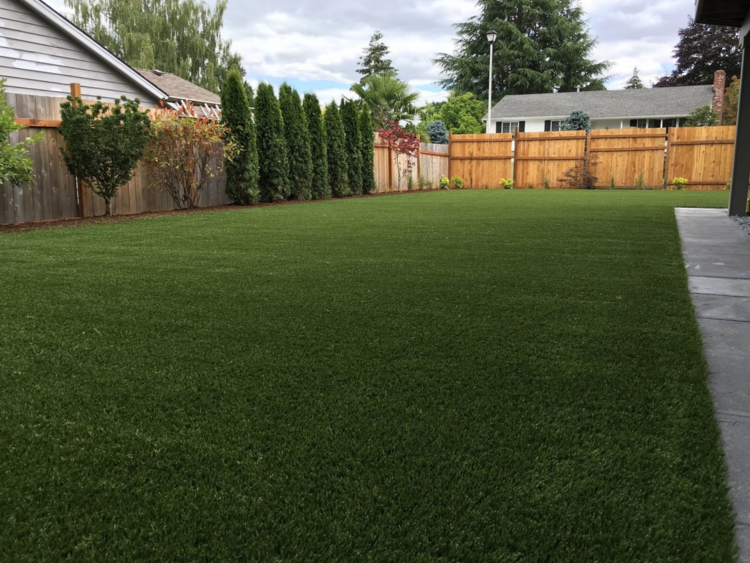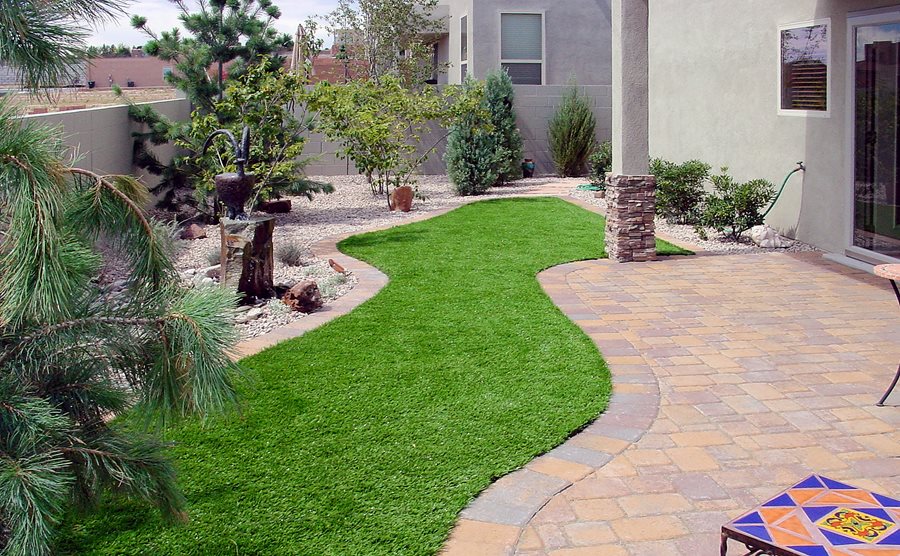Experience a Flawless Lawn with Arizona Artificial Turf for Any Outdoor Space
Experience a Flawless Lawn with Arizona Artificial Turf for Any Outdoor Space
Blog Article
Look Into the Environmental Conveniences of Opting for Artificial Turf Solutions
The adoption of fabricated turf services offers a compelling possibility to address pushing environmental difficulties. By dramatically reducing water use and minimizing the application of unsafe chemicals, these alternatives not only advertise sustainable landscaping however additionally safeguard regional ecosystems.
Water Preservation Advantages
One of the most substantial benefits of artificial grass is its ability to conserve water. In comparison, synthetic lawn does not need watering, significantly minimizing the overall demand for water sources.
By removing the need for regular watering, synthetic grass adds to sustainable landscape practices and helps alleviate the ecological impact of too much water usage. Furthermore, the preservation of water expands to the decrease of runoff, which can lead to dirt disintegration and waterway air pollution.
Additionally, the setup of fabricated turf allows homeowners and municipalities to designate water sources extra successfully, concentrating on important uses such as drinking water and agriculture. The change in the direction of artificial turf not only advertises liable water use however likewise aligns with wider environmental goals intended at preserving natural resources.
As communities significantly prioritize sustainability, the water conservation advantages of synthetic grass offer a compelling case for its fostering in business and household landscaping tasks.
Lowered Chemical Use
The change to fabricated lawn dramatically decreases the reliance on chemical therapies frequently utilized in all-natural lawn maintenance. Typical grass management normally includes the application of fertilizers, herbicides, and pesticides to advertise growth and control pests. These chemicals can posture threats to human wellness, regional wild animals, and the environment, adding to soil and water contamination.
In contrast, fabricated lawn eliminates the need for these hazardous materials. By minimizing the release of synthetic substances into the community, man-made grass promotes healthier soil and water systems.
Additionally, the lack of chemical overflow related to artificial turf installments assists secure neighborhood rivers from pollution, supporting water life and maintaining biodiversity. Arizona turf. As communities increasingly prioritize lasting techniques, going with synthetic lawn provides a feasible option that straightens with ecological conservation goals. Through this shift, homeowner can take pleasure in rich environment-friendly areas without jeopardizing ecological health, leading the way for a more sustainable future
Lower Carbon Footprint

Additionally, the installation of fabricated turf can cause considerable water preservation. Natural lawns need significant amounts of water for irrigation, which not just includes in the carbon impact associated with water extraction and treatment yet additionally strains regional water sources. In comparison, synthetic grass needs very little upkeep, needing no watering, thereby substantially lowering water use and its connected energy expenses.
In addition, the durability of synthetic grass contributes to its lower carbon impact. With a life expectancy of approximately 15 years or even more, the demand for constant replacements is reduced, leading to less waste and lower power usage in production and getting rid of standard grass alternatives. Overall, artificial turf offers a sustainable option for eco aware landscape design.
Environment Conservation
Habitat preservation is a vital consideration in the discussion over landscape design options, particularly when comparing synthetic grass to all-natural turf. Natural grass yards often call for considerable upkeep, including making use of herbicides, plant foods, and chemicals, which can negatively affect local ecosystems. These chemicals can seep into the soil and rivers, harming indigenous flora and animals and interfering with local environments.
On the other hand, synthetic grass presents a possibility to decrease the eco-friendly footprint of landscape design. By opting for artificial lawn, home owners can reduce the disruption of natural environments connected with typical lawn care methods. Artificial lawn eliminates the demand for damaging chemicals, thus shielding neighboring wild animals and preserving the honesty of surrounding ecological communities. The installment of artificial turf can lead to the conversion of former lawn locations right into even more biodiverse landscapes, such as pollinator yards or indigenous plant locations, which can sustain local wildlife.
Eventually, the change to synthetic grass not only preserves water and decreases maintenance initiatives yet additionally fosters a more unified partnership between human tasks and the native environment, advertising habitat preservation in content the procedure.
Long-Term Sustainability
Long-lasting sustainability is a critical element in examining the advantages of artificial lawn over traditional turf yards. Among the most significant benefits of synthetic grass is its durability; it can last approximately 15-20 years with very little upkeep, whereas natural grass calls for regular reseeding and replacement. This long life minimizes the need for consistent sources, such as water, plant foods, and pesticides, which are essential for preserving a healthy and balanced turf lawn.
In addition, synthetic grass adds to a decrease in carbon emissions connected with yard treatment devices. Typical lawns often need gas-powered lawn mowers, trimmers, and blowers, every one of which add to air pollution. Turf installation phoenix az. In comparison, fabricated turf gets rid of the need for such tools, promoting a cleaner setting
Moreover, the production of fabricated lawn increasingly uses recycled products, boosting its sustainability profile. As manufacturers embrace eco-friendly practices, the environmental footprint of synthetic grass remains to lessen.

Verdict
The adoption of synthetic grass solutions provides substantial ecological benefits, including significant water conservation, decreased reliance on damaging chemicals, and a lower carbon footprint. Synthetic grass aids in preserving natural environments by lessening land disruption and promoting long-term sustainability with the use of resilient materials. Jointly, these variables emphasize the potential of synthetic grass to add positively to environmental health and offer a viable choice to conventional landscaping techniques in a significantly resource-conscious world.
In contrast, man-made grass does not require watering, significantly minimizing the overall demand for water sources. By reducing the launch of synthetic substances into the ecosystem, man-made grass promotes much healthier soil and water systems.
Moreover, the installment of fabricated grass can result in substantial water conservation. In comparison, fabricated lawn needs very little upkeep, requiring no watering, thus dramatically decreasing water use and its linked power expenses.

Report this page